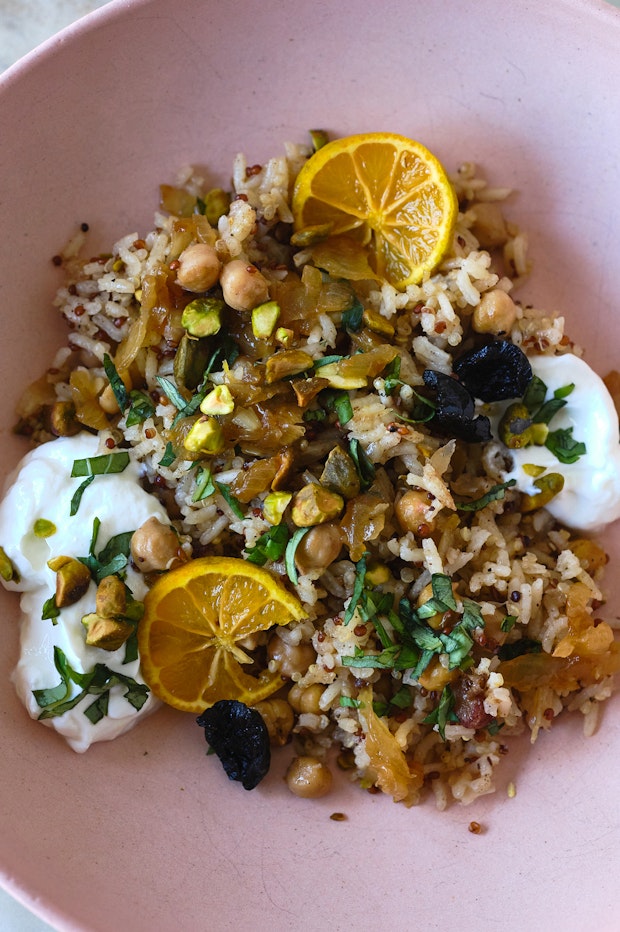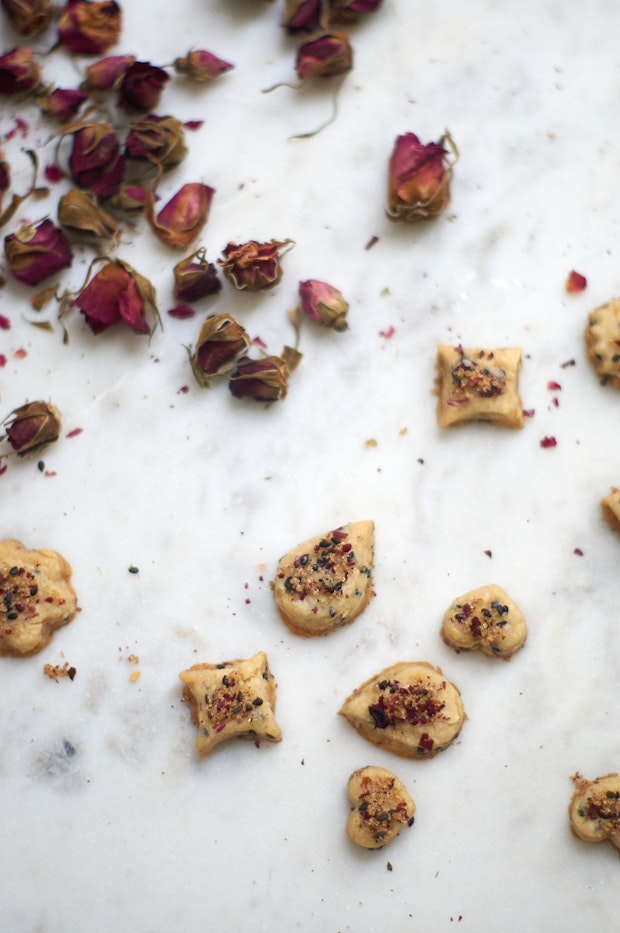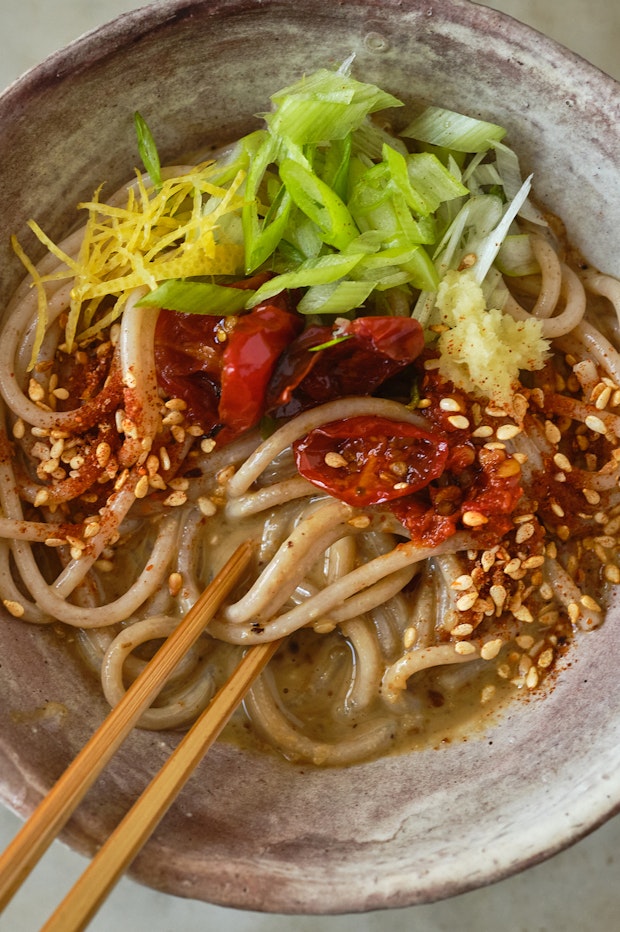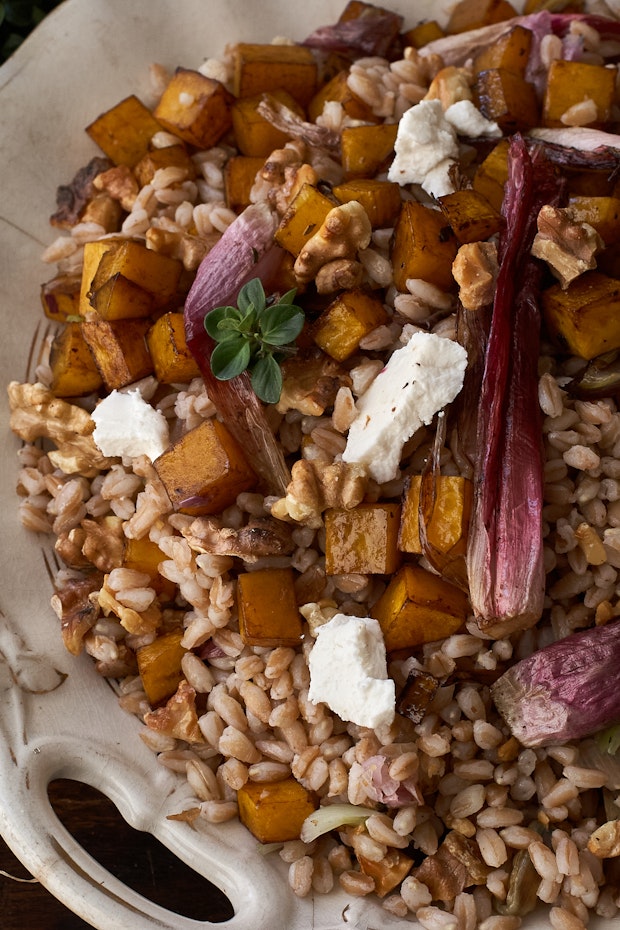Rice pilaf is a great foundation recipe to know. Once you learn to make it well, you can tweak the recipe a thousand ways to your liking. This is a favorite approach for me. Be sure to make it pretty (and extra delicious) with toppings. There are a bunch listed in the recipe.
How To Make Rice Pilaf: The Technique
The backbone of a good pilaf is, of course, rice. You want it fluffy and well defined. For this pilaf, you build flavor early. Onions are caramelized in a blend of olive oil and butter. The butter browns and becomes fragrant. To that, spices are added, and ingredients like beans or pulses, toasted nuts, and dried fruit are added. You have a lot of latitude here, and the combination of chickpeas, chopped dates, and pistachios (pictured) are a favorite. Water is added and the pot simmers until the rice absorbs and softens. A finishing squeeze of citrus juice and shower of herbs brightens things up. Toppings like salted yogurt and olives are the finishing touch.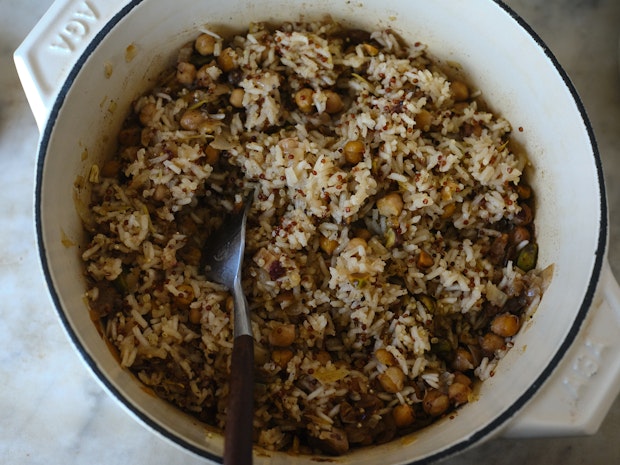
Rice Pilaf Variations
- In place of dates: Use dried apricots, golden raisins, dried cherries, or dried figs.
- Spices: The cinnamon version shared here is wonderful, but you can go in entirely different. directions by swapping in za’atar, curry powder, onion and garlic powder, mushroom powder, etc.
- Experiment with grains: Adding a percentage of whole grains (or fast-cooking lentils) to a typical pilaf is a great way to incorporate a bit of a nutritional boost and ingredient diversity. For 2 cups of basmati rice a great place to start is 25%.
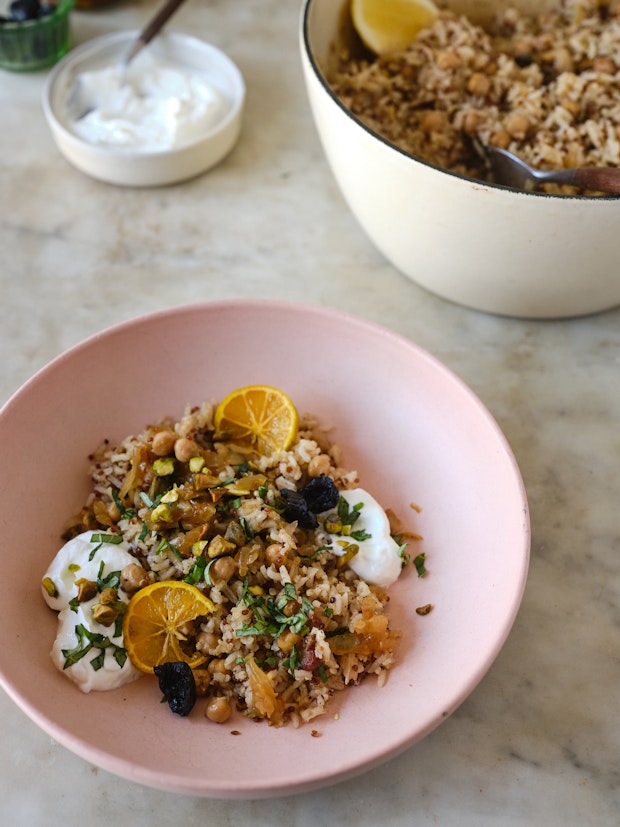
To Reheat
The key to reheating a rice pilaf like this one is to add a few tablespoons of water to the pan or dish you’re using. Heat gently, give it a good stir, and then go for a second round of heating. You mainly want to avoid the rice drying out, so adding a bit of moisture really helps.
More Rice Recipes
- Green Rice
- Citrus Rice
- Kale Rice Bowl
- Sesame Coconut Rice
- Sushi Bowl
- Vegetarian Paella
- Rice Salad
- all rice recipes
Continue reading Rice Pilaf on 101 Cookbooks
Source: 101 Cookbooks
